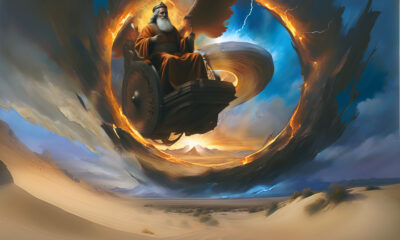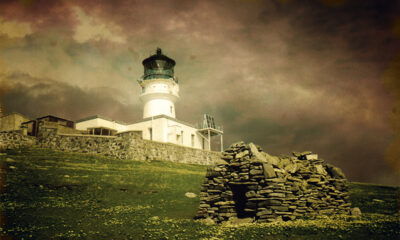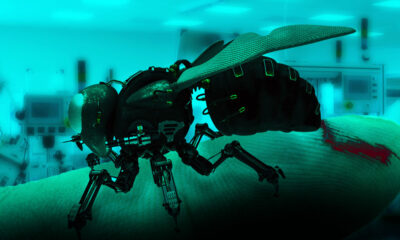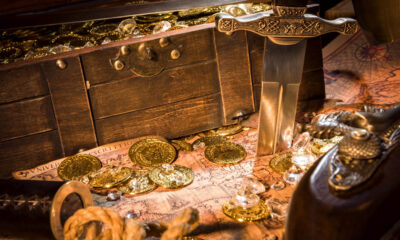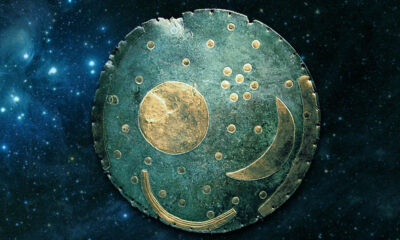Ancient Mysteries
The Curse of Tutankhamun – The Victims
According to the Los Angeles Times, more than 14 people directly associated with the Egyptian excavations died in mysterious or unpleasant circumstances.

THE CURSE OF TUTANKHAMUN
If you’re reading a website about mysteries and haven’t already heard about the Curse of Tutankhamun, then you are definitely in the minority. Here are the basics that just about everybody remembers. “Once there was a boy king of Egypt called Tutankhamun. He was buried, and his tomb lay undiscovered for thousands of years. A team of archaeologists eventually found the tomb and opened it. Many of them later died in mysterious circumstances.”
This was the mystery that launched a thousand movies. Well, a good few dozen, at least. The best and most recent has to be ‘The Mummy’ series starring Brendon Fraser and Rachel Weisz.
Some say the curse was nothing but coincidence, but there is no denying that many associated with the discovery of the tomb did die in unfortunate circumstances. Here’s a list of some of the people who died or suffered. You can make up your own mind.

Howard Carter in the Tomb of Tutankhamun (WMC)
THE CURSE OF TUTANKHAMUN – DEATHS AND DISASTERS
Howard Carter the archaeologist and his sponsor Lord Carnarvon discovered the burial chamber of the forgotten boy-king hidden in the Valley of the Kings in Egypt on 4th November 1922. According to the legend the curse started to take effect almost immediately.
1922
Golden Bird: According to the legend, Howard Carter had brought a pet canary to the dig site and some say that that one day it started singing furiously as Carter walked over where Tutankhamun’s tomb would be found prompting speculation that this was an omen. The day after the tomb was opened a serpent got into the bird’s cage at Carter’s house and killed it. Many saw the snake – a cobra – as representing the spirit of the dead pharaoh and the legend of the curse began.

The sarcophagus and mummy of Tutankhamun being examined by Howard Carter (WMC)
While this story has been told many times in many publications, the precise source of the information is vague. In one version the canary actually belonged to one of Carter’s friends.
1923
Carnarvon: The first to be struck down was Lord Carnarvon who funded the excavations. He was bitten on the cheek by a mosquito. He died delirious with fever within seven days on the 5th April 1923. What is even stranger is that he died precisely five months to the day after discovering the tomb. It is said that x-rays of Tutankhamun showed that he had a small scar on his cheek in exactly the same place where Lord Carnarvon was bitten.

Howard Carter and Lord Carnarvon at the Tomb of Tutankhamun (WMC)
It is true that Lord Carnarvon was bitten on the cheek by a mosquito that became infected and resulted in septicaemia. It is also true that Tutankhamun had a small scar in roughly the same place that Lord Carnarvon was bitten.
(Source National Geographic / http://ngm.nationalgeographic.com/print/2005/06/king-tut/williams-text)
Susie: According to family members of Lord Carnarvon his dog Susie let out a howl of anguish at precisely the same time Carnarvon died and then died herself. What makes this so spooky is that Susie was back at home in England some 3,500 miles away. The story was told often by his son – George Herbert, 5th Earl of Carnarvon.
Cairo Blackout Deaths: The story goes that on the night that Lord Carnarvon died there was an unexplained blackout in Cairo. The following morning two bodies were found that some curse researchers claim were Egyptian labourers who had worked on the dig with Howard Carter.
George Jay Gould, an American railway executive, died in the French Riviera on May 16, 1923 after he developed an unexplained fever following a visit to the tomb.

George Jay Gould and the Curse of Tutankhamun (WMC)
Prince Ali Kamel Fahmy Bey: He was a 23-year-old Egyptian prince who was shot by his French wife of six months – Marie-Marguerite – on the 10th of July 1923 at the Savoy Hotel. Shortly before this event he had visited the tomb of King Tutankhamun and had his photograph taken there.
Aubrey Herbert, the half-brother of the recently deceased Lord Carnarvon, died on the 23rd of September 1923 of blood poisoning after a routine dental operation went strangely wrong while he was attending a private hospital in Park Lane. He had only just come back from his own trip to Luxor in Egypt.
Ahmed Kamal Bey (Pasha) was Egypt’s first Egyptologist and a scientific pioneer in his own country. He visited the tomb of Tutankhamun and died shortly afterwards probably from a lung infection.
1924
Archibald Douglas Reed was an English scientist, employed by the Egyptian government who was in charge of taking x-rays of the mummy before it was removed to the Museum of Cairo. According to many sources, he fell ill the morning after the X-rays had been completed. By the 15th of January 1924 – within just three weeks – he was dead of an unidentified illness.
Hugh Evelyn-White (1874-1924) was an English archaeologist and coptologist. He was educated at King’s School, Ely. In 1909 he joined the Metropolitan Museum of New York’s expedition to Egypt, remaining with them until 1922, except for a period when he served in World War I. He was one of the first to enter the mortuary chamber, where the mummy of the pharaoh was found. He returned to Leeds in England and worked as a lecturer at the University. In 1924 he shot himself while travelling in a cab. In order to explain this desperate act, he wrote in a letter: “I have succumbed to a curse which forces me to disappear.
Sir Lee Stack, Governor-General of the Anglo-Egyptian Sudan, was one of the first people to visit the tomb of Tutankhamun. Six months later while he was being driven from the Egyptian War Office in Cairo to his official residence, he was shot multiple times by a group of students. He died of his wounds three days later on the 19th of November 1924.
1926
Professor Aaron Ember was one of the leading Egyptologists in the United States and was recognized in Europe as an expert on ancient Egypt. He was head of the department of Egyptology at the Johns Hopkins University. He died on 1st June 1926 after his house caught fire and he delayed leaving until he had rescued an original version of the Egyptian Book of the Dead he’d been working on. Some say it was a book sent to him by Howard Carter.
1928
Arthur Cruttenden Mace was a member of Howard Carter’s team during the discovery of Tutankhamun’s tomb (KV62) in 1922, and provided an invaluable help to Carter during both the excavations and the drafting of the first volume of The Tomb of Tut.ankh.Amen. In 1924 his health started to mysteriously deteriorate, and he left Egypt never to return. He died on 6 April 1928 after having written a letter claiming that he was being poisoned by arsenic.

Arthur Cruttenden Mace and Howard Carter Examine the Chariot (WMC)
Sir Bruce Ingham received a gift from his friend Howard Carter some years after the discovery of the tomb. It turned out to be a paperweight made from a mummified hand wearing a scarab bracelet that was allegedly inscribed with “Cursed be he who moves my body. To him shall come fire, water and pestilence.” Within a short time, Sir Bruce’s house burned down. When he set about having it rebuilt a flood washed away the new foundations. The new house was finally built and mysteriously burned down again.
1929
Howard Carter’s personal secretary, Captain Richard Bethell, was found dead in bed in 1929. However, according to both old and more recent news reports he had been smothered to death while staying at an exclusive Mayfair club in London on the 15th of November 1929.
1930
Edgar Steele (24 February 1930): only four days later, Edgar Steele, 57, who was in charge of handling the tomb artefacts at London’s British Museum, died at St Thomas’ Hospital after a minor stomach operation.
Lord Westbury (20 February 1930): Bethell’s father, Lord Westbury, 77, was believed to have thrown himself off his seventh floor St James’s apartment. Bethell’s father committed suicide in suspicious circumstances in 1930. What made this event even more bizarre, was that the apartment was filled with unregistered items taken from King Tutankhamun’s tomb, that had been gifted to him by his son.
Now that’s quite a list but it’s not complete. According to various researchers there should be even more names attached to the curse of Tutankhamun. Some of these include:
- Joel Woolf
- Edouard Neville
- Professor La Fleur
- William Henry Goodyear
- Bernard Greenfell
- Lady Almina
- John Maxwell
… and even the nurse who attended to Lord Carnarvon during his illness!
Information about these people and the way that they died is difficult to validate. For now, they must remain just a few of the extras in this chilling tale of a cursed tomb and the boy king Tutankhamun.

The Curse of the Mummy’s Tomb (SSPL / Comp)
FACT OR FICTION?
The accounts of the curse mostly originate from 1920’s-era newspapers, well known for sensationalism and exaggeration of the facts to make great headlines. Reliable records of what happened to Carter’s people after they left the dig are hard to come by. References to the simultaneous death of dogs, the canary, and the lights going out in Cairo are found only in these newspaper reports and so should be considered anecdotal at best.
According to the Los Angeles Times, more than 14 people directly associated with the Egyptian excavations died in mysterious or unpleasant circumstances.
There is one last twist to the story. It’s often been said that the curse of Tutankhamun was untrue because Howard Carter, the man who actually opened the tomb, lived for another 17 years after its discovery.
However, according to those that knew him, he was often depressed after his discovery and unhappy for most of this time. He never married or had children. Some say he was in love with Lord Carnarvon’s daughter and pined for her most of his later life. He later contracted Hodgkin’s Disease. In 1939 he died alone in his London flat aged just 64. After his death, his executors found at least 18 items that Carter had secretly taken from Tutankhamun’s tomb. Most of these were eventually returned to Egypt and the curse seemed to stop claiming victims.



